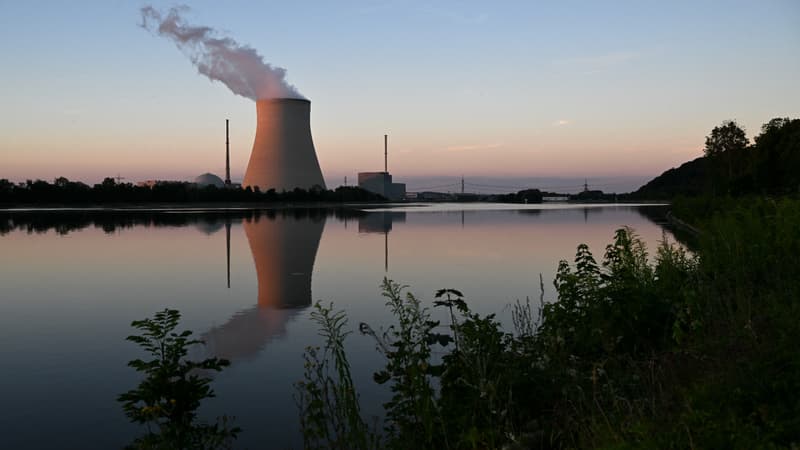Germany maintains the course of its exit from nuclear energy despite the energy crisis: the country disconnects its last three reactors this Saturday and is committed to a successful green transition without atomic energy. On the banks of the Neckar River, not far from Stuttgart (south), the white steam escaping from the Baden-Württemberg nuclear power plant will soon be just a memory. The same further east for the Bavarian complex of Isar 2 and that of Emsland (north), at the other end of the country, not far from the Dutch border.
While many Western countries rely on nuclear power, Europe’s largest economy is turning the page. Even if the issue will have remained controversial until the end. Germany is implementing the decision to phase out nuclear power taken in 2002 and accelerated by Angela Merkel in 2011, after the Fukushima disaster. Fukushima demonstrated that “even in a high-tech country like Japan, the risks associated with nuclear energy cannot be 100% controlled,” the former foreign minister then justified.
The announcement won over public opinion in a country where the powerful anti-nuclear movement was fueled first by fears of Cold War-related conflict and then by accidents like Chernobyl. The invasion of Ukraine on February 24, 2022 could have put everything into question: deprived of Russian gas, which Moscow cut off for the most part, Germany was exposed to the darkest scenarios, from the risk of closing its factories to the to run out of gas. Heating in the middle of winter.
“The Wheel Has Turned”
A few months after the date initially set for the closure of the last three reactors, December 31, the current of opinion has begun to change: “with the high prices of energy, the hot topic of climate, the voices are for supposedly high to extend the power plants”, testifies Jochen Winkler, mayor of the municipality of Neckarwestheim, where the power plant of the same name lives its last hours.
Olaf Scholz’s government, in which the Green party, the most hostile to nuclear energy, has finally decided to extend the operation of the reactors to ensure supply. Until 15 April. “There could have been a new discussion if the winter had been more difficult, if there had been power outages and gas shortages. But we had a winter without too many problems”, thanks to the massive importation of liquefied natural gas, notes Jochen Winkler.
For the mayor of the town of 4,000 inhabitants, of whom more than 150 work at the plant, “the wheel has already turned” and there was no time to “go back.” Sixteen reactors have been closed since 2003. The last three plants contributed 6% of the energy produced in the country last year, while nuclear represented 30.8% in 1997. Meanwhile, the participation of renewables in the mixed production reached 46% in 2022, compared to less than 25% ten years earlier.
5 wind turbines per day
However, the current rate of progress in renewables satisfies neither the government nor environmentalists, and Germany will not achieve its climate targets without a serious push. These goals “are already ambitious without eliminating nuclear power – and every time we deprive ourselves of a technological option, we make things more difficult,” says Georg Zachmann, an energy specialist at the Brussels think tank Bruegel.
The equation is even more complex given the goal of shutting down all of the country’s coal-fired power plants by 2038, many of them by 2030. Coal still accounts for a third of German electricity production, up 8% last year for make up for the absence of Russian gas. Germany will have to install “4 or 5 wind turbines every day” for the next few years to meet its needs, warned Olaf Scholz. The step is high compared to the 551 units placed in 2022.
A series of regulatory relaxations adopted in recent months should allow the pace to pick up. “The planning and approval process for a wind project takes an average of 4 or 5 years,” according to the industry federation (BWE), so gaining one or two years would already be “considerable progress.”
Source: BFM TV


